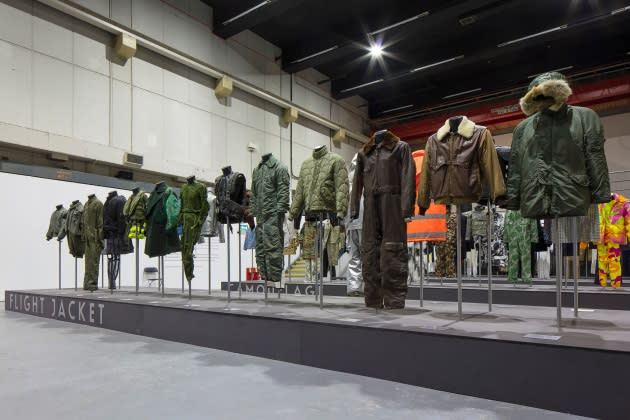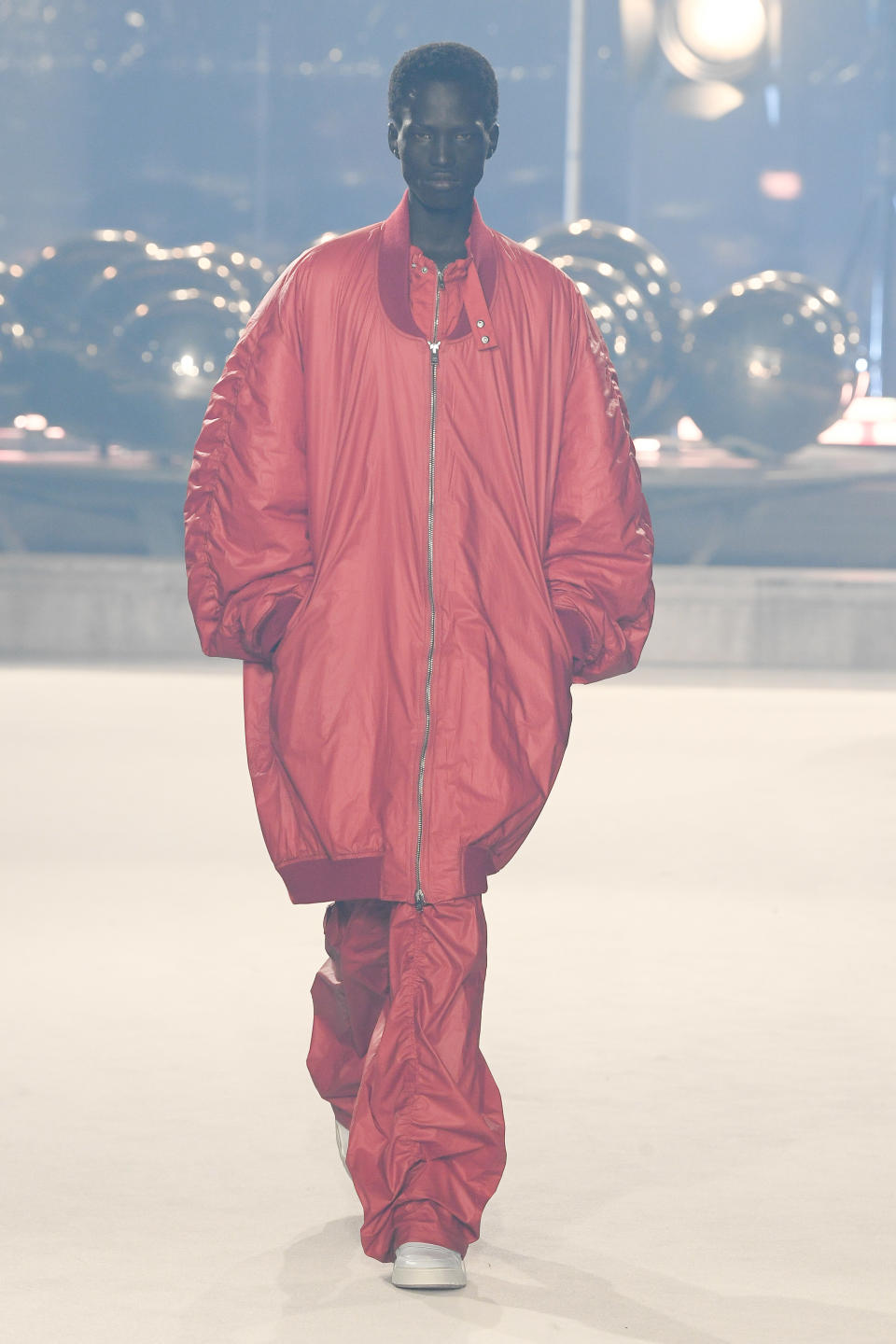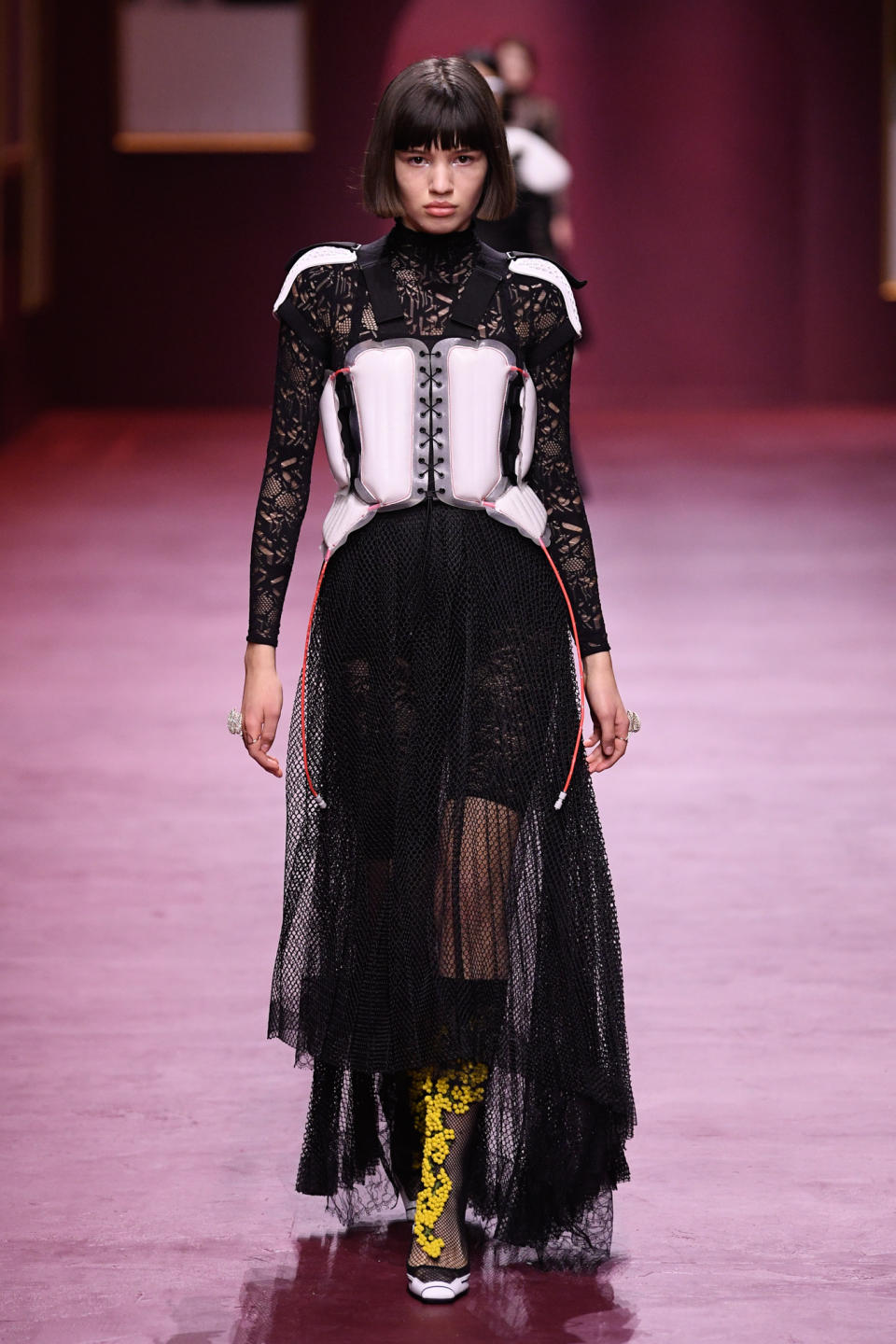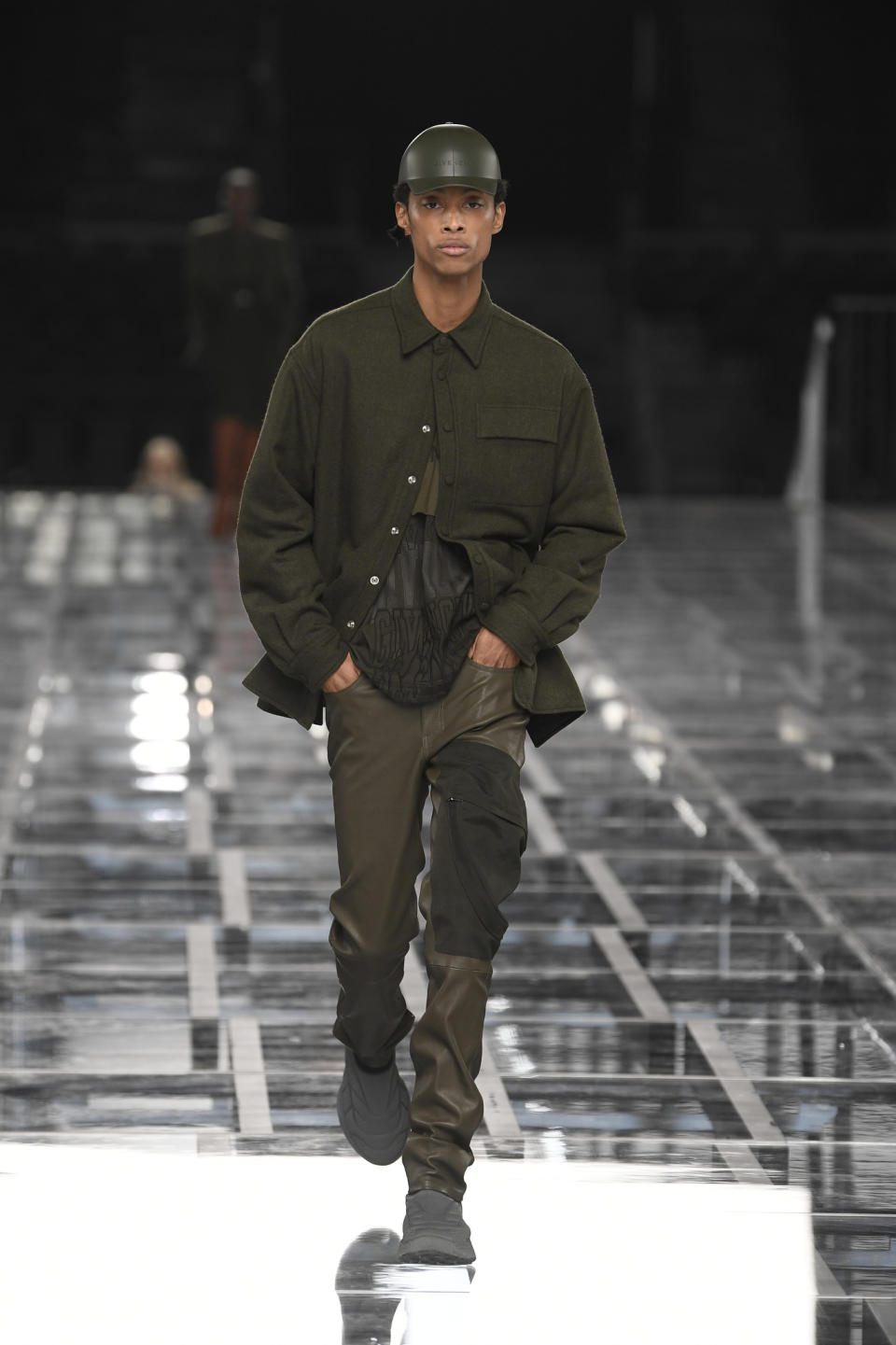Military-inspired Fashions Take on New Meaning Amid Ukraine War
- Oops!Something went wrong.Please try again later.

Might Russia’s invasion of Ukraine, which sparked global condemnation, a humanitarian crisis and a rash of sanctions, put any damper on fashion’s recent enthusiasm for such Army-inspired styles as bomber jackets, cargo pants and combat boots?
Not necessarily, say fashion historians, retailers and other observers, arguing that military-inspired styles have become deeply entrenched in contemporary wardrobes, prized for their clean lines, functionality and — possibly fanned during the pandemic — for bolstering the wearer’s confidence.
More from WWD
“Tough times often spawn tough styles to take it on and stomp through it,” commented Linda Fargo, Bergdorf Goodman’s senior vice president of fashion, referring partly to the chunky all-terrain footwear that gained popularity over the past year, from Prada’s Monolith boots to Bottega Veneta’s Lug style. “We’ve been cycling through fatigue greens, cargo pants, bombers and combat boots for a long time now. At the moment, and again perhaps in response to the growing crisis, oversize silhouettes, big-shouldered jackets, puffed-out protective bodies and oversize footgear seem to make even more sense — fashion at the ready!”
Tanks began rolling across Ukraine’s borders during Milan Fashion Week, with bombing intensifying through the Paris leg of the shows, leading to some uneasiness about the frivolity of the proceedings. Giorgio Armani paraded his fall 2022 collection without music, while French fashion’s organizing body urged everyone to witness the shows with “solemnity.”

Giovanni Giannoni/WWD
The industry rallied quickly to raise funds to help Ukrainians displaced and impoverished by the conflict, and to suspend retail and some wholesale operations in Russia. But there was not enough time to change collections, some of which included olive drab, bomber jackets and body armor reminiscent of flak jackets.
“It‘s been quite painful to witness some of the brands’ clumsy attempts to either ignore the war or to align their collections meaningfully,” commented Andrew Groves, a professor of fashion design at the University of Westminster in London.
Groves noted that “fashion was able to exist in its own bubble during previous wars that were only covered by traditional media. This is the first major conflict to emerge and be mediated via TikTok and Instagram, and because fashion is increasingly consumed digitally rather than physically, the industry has struggled to navigate this shared space and strike the appropriate tone.”
“Fashion is about personal replies,” said Pamela Golbin, a fashion historian, writer and industry consultant. Among the most poignant this fall 2022 season was Balenciaga, whose creative director Demna said the Russian invasion triggered painful memories of the civil war in his native Georgia that made him a “forever refugee,” and Rick Owens, who swapped out a barrage of aggressive beats for Mahler’s Fifth Symphony, a majestic musical accompaniment to his elegant, dignified 1930s silhouettes.
“One had to wonder if the pending and now more than real war prompted Maria Grazia [Chiuri at Dior] to add protective padding to what otherwise might have been more delicate lacy corsetry,” Fargo mused. “Balmain took it even further, in what felt like action hero/heroine attire for a metaverse battle or virtual do-or-die games.”
Groves noted that sincere responses help “reinforce a central tenet of fashion: the need to convince the public that a designer is constantly in tune with the wider world and responding meaningfully through dress.”

Giovanni Giannoni/WWD
Wars have directly inspired designers in the past, with Elsa Schiaparelli famously designing “cash and carry” pockets, eliminating the need for handbags, as well as air-raid shelter suits during the Second World War, Golbin noted. But sometimes military-inspired collections turn up during peaceful times, as in 2011 when Marc Jacobs paraded a tough-edged Louis Vuitton collection of jodhpurs and peaked caps inspired by the controversial 1974 film “The Night Porter.”
But in her mind, garments and elements sprung from military dress — including Yves Saint Laurent’s famous safari suit, and camouflage prints — have now “become archetypes of the fashion vocabulary that no longer have their original function associated with them.”
Menswear, meanwhile, is “inextricably linked to its military roots,” Groves said, noting that nearly all its archetypal garments, such as the bomber jacket, trenchcoat, and combat trousers, have military origins.
“Along with its associations with heroic masculinity, military style places a premium on functionality and authenticity, allowing men to pretend they are uninterested in fashion,” he said. “Burberry is still associated with officers wearing trenchcoats 100 years after World War I, and as a result the brand is viewed positively.”
Perceptions of military-inspired clothes depend greatly on the circumstances and “how big or how ideologically relevant the war is to people in a particular country,” said Valerie Steele, curator and director of The Museum of FIT. “There’s just so many variables.”
Certain conflicts can inflame patriotic feelings in the involved country, prompting civilians to wear clothes that telegraph their commitment to the struggle, she explained, while soldiers returning from war may continue to wear military gear informally out of pride and familiarity, as seen after the Second World War.
By contrast, “there was such a huge international protest movement against American engagement in Vietnam that you had an interesting phenomenon of people who were against the war who were wearing Army and Navy clothes, not to say we support this war, but rather to be making an anti-war statement.”
As for military-inspired elements that continue to turn up on runways and at all levels of fashion, Steele was skeptical that there would be much outcry.
“I know that there’s a range of feelings about whether this is wholly inappropriate and typical of fashion just reducing everything to a style statement,” she said. “I think that there’s a lot of ambivalence about it, and a lot of not knowing actually what to think about it.”

Giovanni Giannoni/WWD
That said, she allowed that the terminology around military-inspired items could come under scrutiny. Just like the use of certain names for fashion styles — like that applied in the past to a man’s tank top — are now frowned upon, “it’s entirely possible that bomber jacket will become an unacceptable name or combat boots will become unacceptable. But I don’t think it’s happened yet.”
To be sure, women’s fashions have often flirted with army themes.
“Even in the 19th century, there was considerable female interest in military-inspired clothes,” said Steele, also pointing to more recent examples like Jean Paul Gaultier’s camouflage-print ballgown from his spring 2000 couture collection.
In 2006, the Museum at FIT mounted an exhibition called ““Love and War: The Weaponized Woman” that explored the influence of armor and other military styles on contemporary fashion.
More recently, the Musée de l’Armée Invalides in Paris had “Les Canons de l’élégance.” The show in 2019 exalted more than 200 military uniforms and objects from the 16th century through to Raf Simons’ runway looks to explore how they helped men “mark their status in the military hierarchy, display the glory of their triumphs and set themselves apart from civilians.”
Dr. Carolyn Mair, a behavioral psychologist and author, said she’s not surprised by the enduring popularity of bomber jackets, cargo pants and the like “because they’re comfortable and versatile, more durable than many fashion items and gender-free. And fashion is cyclical.”
But she also stressed that the psychology at play is complicated.
“What we wear makes a statement about who we are, our preferences and social affiliations,” she said, and “obvious military-style fashion” transmits messages that are interpreted according to the perspective of those who encounter them.
Indeed, she warned that “this interpretation might be completely different from the wearer’s intended message.
“For example, it could be interpreted as the wearer being sympathetic to the war, ready to fight, thinks it’s a ‘fashion opportunity’ or is simply indifferent to it. The wearer might not even be aware that clothing is an important form of communication,” she said. “Perhaps a safer way to show support for Ukraine at this time is to wear yellow and blue.”
SEE ALSO:
Fashion Has Found Beauty in Other Cultures for Centuries — but Has It Given Due Credit?
Varsity Jackets, Baggy Jeans Among Top Men’s Searches in 2021
Alpha Industries on 60th Anniversary Collabs and Beyond
Best of WWD
Sign up for WWD's Newsletter. For the latest news, follow us on Twitter, Facebook, and Instagram.

